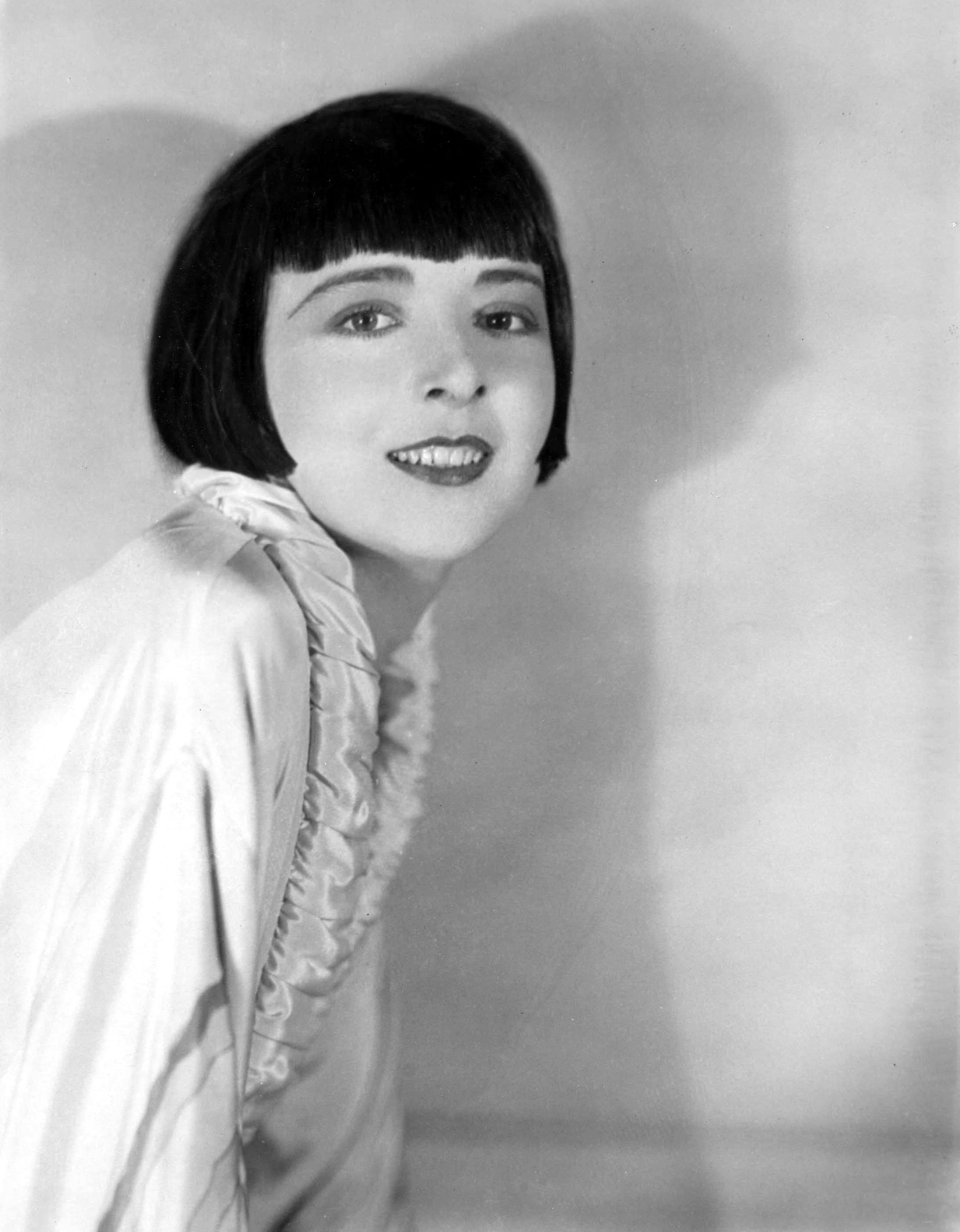 |
| Louise Brooks in Pandora's Box |
 |
| Colleen Moore |
I kept a look out for Louise Brooks. In 1986 the BBC devoted an Arena to her. (It’s also on YouTube.) Brooks was a very perceptive analyst of the movie industry’s origins. “The thing that finally succeeded [when Mack Sennett was looking for backers for his company] was that he introduced them at parties to all these lovely girls. That’s what convinced them to invest their money. They decided it would be perfectly fine to own beautiful girls,” she said.
The BBC also screened a few of her films and I cut her photo out of the Radio Times. Pandora’s Box, Diary of a Lost Girl (both 1929, both directed by Georg Wilhelm Pabst) and, starring John Wayne, Overland Stage Raiders (1938), her final movie. She wore her hair long in that one; a lot can change in 9 years. Back in the late 1980s Time Out (a London listings magazine of the period) profiled her. Magazines – style, Sunday, fanzines – would and still do: she has become an icon, a dash of credibility. Her image decorates my sister’s make-up bag.
Brooks was ‘rediscovered’ during the 1950s by key critics: Francois Truffaut and others in France; Kenneth Tynan, following suit, in the UK. These men worshipped her. Tynan: “In her acting, she fused amorality and innocence, playing impulsive, spirited, sexual women. Her performances seemed to be unrehearsed reality” (The New Yorker, 1979). As “Lulu”, in Pandora’s Box, Louise Brooks personified Frank Wedekind’s creation as definitively as Boris Karloff’s Frankenstein’s Monster inhabited Mary Wollstonecraft’s.
So reading about Louise Brooks was a good teenage hobby, leading in lots of directions. Lou Reed’s final album was about “Lulu”. Her books were full of information. Brooks' private life was not dissimilar to that of her greatest role. She became a crucial contributor to the field of film history. For example, she wrote to Kevin Brownlow after receiving his first cinema history book The Parade's Gone By... (1968); he had missed the significance of Clara Bow, a huge star to young women.
Yet Brooks was forgotten. Be warned, here’s how Variety magazine reviewed Pandora’s Box in 1929: “Louise Brooks, especially imported for the title role, does not pan out, due to no fault of hers. She is quite unsuited to the vamp type. Grave mistake to try to make a film of a Franz Wedekind play. Heavy vamp stuff which he wrote is already dated. On the stage, dialog is still of sufficient interest to hold, but the mere plot outline is trivial and overdone. G. W. Pabst, director, is an attempt to keep the whole natural and easy, succeeds merely in making it superficial and lacking in suspense or thrill. Germany’s newly discovered juvenile find, Franz Lederer, doesn’t have a chance to show much, nor can Fritz Kortner get anything out of the heavy” (from Variety Movie Guide 1999). Other critics hated her free-spirited sexuality. The biggest hit of 1929, by a mile, was Gold Diggers of Broadway, a musical in Techicolor: Girls! Songs! Dances! Color! Musical comedies were huge in 1929.
Brooks plays a woman with a superpower: some people cannot stop themselves from falling in love with her. This skill of hers reaches out of the screen and some people in the audience fall in love with her too. Only those men who want to exploit this talent escape its consequences. This is a German Expressionist film: it is not important that it does not appear to be set in 1888 until it reaches London. The dress sense of Countess Geschwitz, an undisguised lesbian, is far more interesting. It’s not all compositions with shadows either. The backstage scene, as crowded as a Marx Brothers cabin, where Lulu gets what she wants by destroying either the opening night or a couple’s engagement, is mesmerising. The story shrinks with Lulu's options.
 |
| Stephen Horne on the accordion, Pandora's Box, Borderlines 2015 |
 |
| Stephen Horne accompanying Pandora's Box at Borderlines |
Robin Clarke,
Festival Volunteer

No comments:
Post a Comment